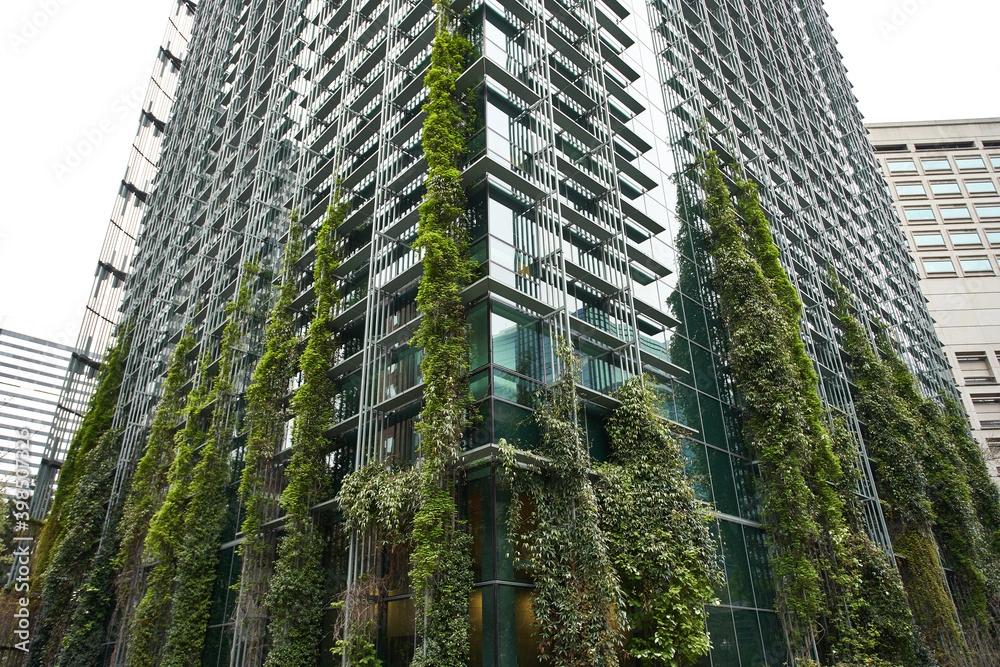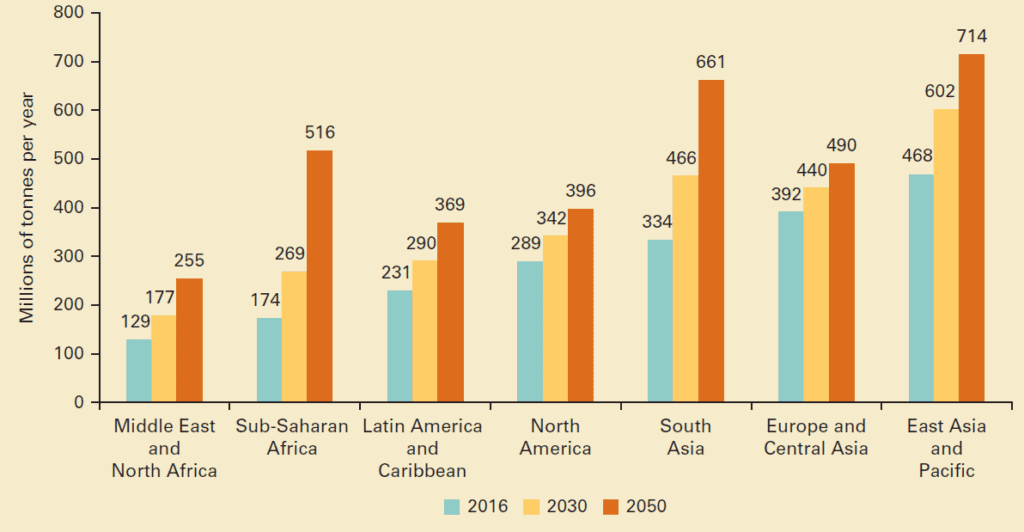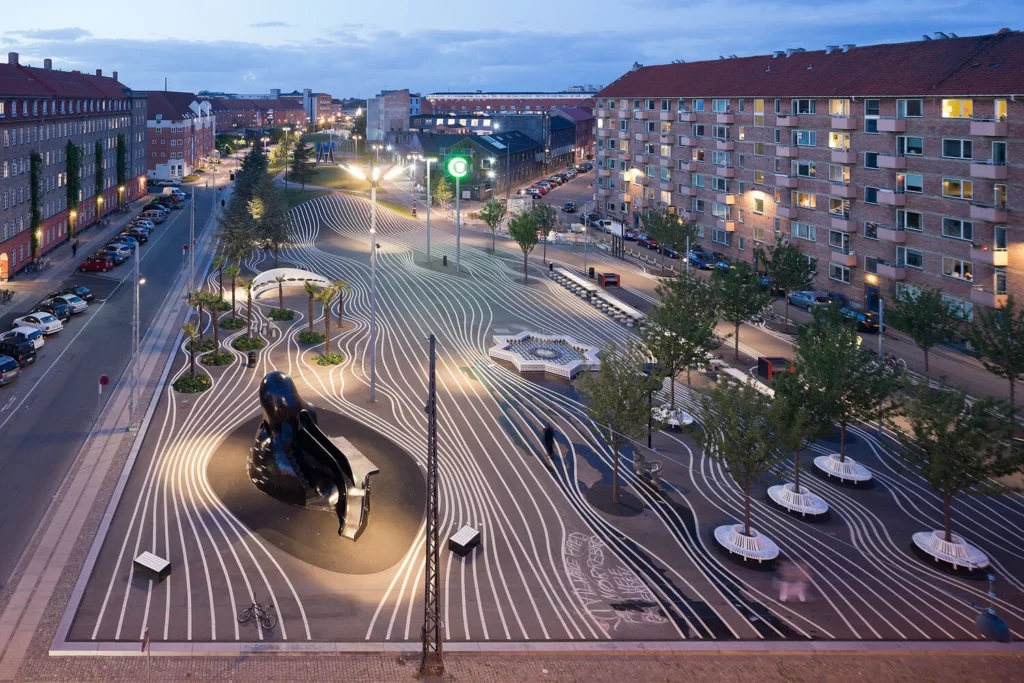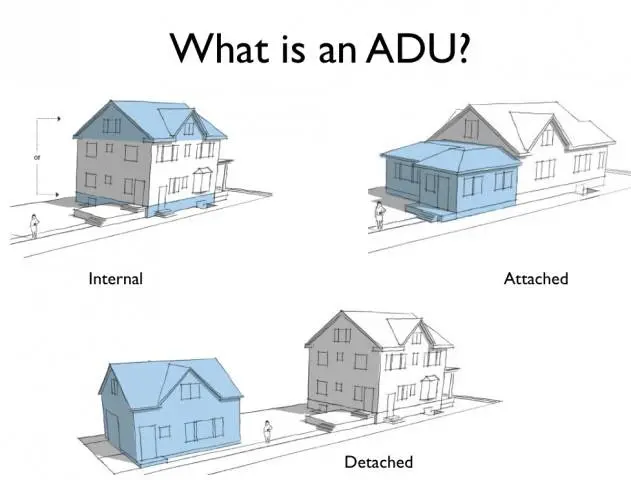The property markets have been stabilizing and normalizing after the COVID-19 outbreak. However, it’s the proverbial “new normal” because the real estate industry has experienced a major structural shift due to the disruptions of the last three years. One of the reasons it was so impactful was because of the sheer globality of the pandemic – it wasn’t localized to one country or even one continent, it was truly global.
As a result, the post-COVID world we live in now is an interesting place to live in, where the forecasts of even a couple of years ago don’t make any sense anymore. The sectors that were trending and rising before the pandemic are no longer experiencing such growth and vice versa. As one of the investment management firm directors put it:
“People are looking to achieve their lifestyle choices more quickly. They’re less focused on their employer and more focused on their personal lifestyle. And that is changing how apartments are being viewed, how single-family residential is being viewed, how the office is being utilized, and where corporations are heading.”
PwC Report
While this quote relates to the US real estate market, it applies to global trends as well. Whether we want it or not, globalization is happening and the world is smaller than it ever was in terms of travel, business, industries, and life. Real estate is literally the physical world we live in – our homes, our workplaces, our stores, etc. Its state affects our daily lives, our economy, our environment, and everything around us and we need to, whether we want to or not, think about its sustainability, technological advances, and mixed-use developments.
So let’s take a closer look at the trends of the real estate industry in the USA and Europe – differences, similarities, and challenges.
Real Estate & Sustainable Construction
Sustainability and environmentally friendly building practices are very popular both in the US and Europe. While in many countries, it’s more of a “nice to have” type of thing and the weight of the decisions lies on the shoulders of separate companies, in the US and EU, there are a lot of government regulations that aim at reducing the carbon footprint in the real estate industry.
This includes the development of green buildings built with eco-friendly materials, energy-efficient homes, and sustainable urban planning. Various green building certifications, for example, LEED, have gained popularity as well.
Sustainability building codes and standards vary between the United States and Europe due to differences in regulations, climate, building practices, and cultural priorities. Let’s take a closer look at distinctions and similarities.
Energy Efficiency & PropTech
Europe tends to have more stringent energy efficiency standards for buildings compared to the United States. European countries often use the Passive House standard, which emphasizes extremely low energy consumption and high insulation levels.
In the U.S., energy codes vary by state and locality. For example,
- California is known for having some of the most stringent energy codes in the country. The California Energy Code (Title 24) sets high standards for energy efficiency in buildings and covers a wide range of requirements, including lighting, HVAC systems, and insulation.
- New York State has implemented the New York Energy Conservation Construction Code, which aims to increase energy efficiency in buildings. This code includes provisions for building insulation, lighting, and the use of renewable energy sources.
- Washington State has its energy code, which is designed to reduce energy consumption and greenhouse gas emissions in buildings. The code addresses insulation, lighting, and HVAC systems, among other things.
- Massachusetts has adopted the Massachusetts Stretch Energy Code, which goes beyond the base energy code to encourage even greater energy efficiency in new construction and major renovations.
- Vermont has implemented the Vermont Residential and Commercial Building Energy Standards, which set requirements for building insulation, lighting, and heating systems to improve energy efficiency.
- Oregon’s building codes include energy efficiency standards, such as the Oregon Residential Specialty Code and the Oregon Structural Specialty Code, which address various aspects of energy performance in buildings.
- Colorado has adopted the Colorado Commercial Energy Code and the Colorado Residential Energy Code, both of which aim to increase energy efficiency in commercial and residential buildings, respectively.
In many cases, energy efficiency and property technology (PropTech) are closely connected, as PropTech solutions often leverage technology to improve the energy performance of buildings and properties. These technologies aim to make real estate more sustainable, cost-effective, and environmentally friendly.
Here are some examples of how property technology and energy efficiency are interconnected:
- Smart Building Management Systems: Proptech encompasses a range of smart building management systems that use sensors, automation, and data analytics to optimize energy use. For instance, building automation systems can control heating, ventilation, and air conditioning (HVAC) based on real-time occupancy and environmental data, thereby reducing energy waste.
- Energy Monitoring and Analytics: Proptech platforms can provide detailed insights into a property’s energy consumption. By collecting and analyzing data on energy usage, building operators can identify areas where energy efficiency improvements are needed and track the effectiveness of energy-saving measures.
- Predictive Maintenance: Predictive maintenance technologies within Proptech can help prevent equipment failures and optimize energy consumption. For example, sensors can monitor the performance of HVAC systems and provide alerts when maintenance is needed, ensuring that equipment operates efficiently.
- Energy-efficient Lighting: Smart lighting systems, often considered a part of Proptech, can automatically adjust lighting levels based on occupancy and daylight, leading to energy savings. LED lighting technology, which is highly energy-efficient, is commonly integrated into these systems.
- Renewable Energy Integration: Proptech solutions may facilitate the integration of renewable energy sources such as solar panels and wind turbines into properties. These systems generate clean energy, reducing reliance on grid electricity and lowering carbon emissions.
- Tenant Engagement Platforms: Proptech platforms may include tenant engagement and communication tools that educate and engage building occupants in energy-saving practices. These platforms can provide real-time energy consumption feedback and offer tips for reducing energy usage.
- Energy-efficient HVAC Systems: Proptech often involves the implementation of energy-efficient HVAC systems, including geothermal heating and cooling, heat pumps, and advanced insulation materials. These technologies reduce energy consumption and improve indoor comfort.
- Building Energy Certification and Compliance: Proptech can assist in ensuring that buildings meet energy efficiency certifications and comply with regulations. It may include tools for energy performance modeling and compliance tracking, simplifying the process for building developers and owners.
- Energy-efficient Materials and Construction Methods: Proptech innovations may include materials and construction methods that enhance the energy efficiency of new buildings. For example, high-performance insulation, advanced glazing, and green building materials can reduce heating and cooling demands.
- Demand Response and Energy Storage: Proptech solutions can enable properties to participate in demand response programs and incorporate energy storage systems. These technologies help manage energy usage during peak periods and provide backup power during outages.
Overall, PropTech and energy efficiency are interconnected through the use of technology to monitor, control, and optimize energy consumption in real estate properties. These advancements contribute to reducing energy costs, and environmental impact, and enhancing the sustainability and resilience of buildings and real estate portfolios.
Renewable Energy
Europe has been more proactive in adopting renewable energy sources in building codes than the rest of the world. Many European countries have indeed implemented policies and incentives to promote the use of solar panels and other renewable energy systems. Germany and Spain are just a couple of examples.
Germany has been a leader in promoting solar energy through its feed-in tariff (FIT) program. The FIT program guarantees fixed, premium rates for electricity generated from solar panels over a set period (typically 20 years), providing a strong incentive for homeowners and businesses to install solar panels.
For several years, Germany has consistently ranked as one of the leading countries in terms of photovoltaic (PV) installations. In 2022, German solar PV expansion jumped by 28%, adding 7.2 gigawatts (GW.) As of the end of 2022, Germany had a cumulative installed PV capacity of 67.3 GW. With 807 watts of solar PV capacity per capita in 2022, Germany holds the third-highest position globally, surpassed only by Australia and the Netherlands.
Spain has introduced various policies and incentives to encourage the adoption of renewable energy systems, including solar power. One notable initiative is the “sun tax” reform, which abolished the controversial “sun tax” that was previously imposed on solar power self-consumption. This change removed barriers for homeowners and businesses to install solar panels and generate their own electricity.

In the United States, the promotion of renewable energy in building codes indeed varies significantly from one state to another. Here are a couple of examples to illustrate this variability:
- California is a leader in promoting renewable energy in building codes. The state has implemented strict energy efficiency standards, such as Title 24, which mandate the use of renewable energy systems like solar panels on new residential and commercial buildings. These standards are designed to reduce energy consumption and greenhouse gas emissions. California also offers various incentives and rebate programs to encourage the installation of solar panels and other renewable energy technologies.
- Texas, on the other hand, has a more decentralized approach to building codes and renewable energy promotion. While there are some local initiatives and building codes that promote energy efficiency and renewables, the state does not have comprehensive mandates at the statewide level. Texas is known for its vast wind energy resources but doesn’t have as many statewide policies specifically focused on promoting renewable energy in building codes compared to states like California.
These examples showcase the diversity in approaches to promoting renewable energy in building codes across the United States, with some states taking more proactive measures than others. The specific incentives and regulations can vary widely, reflecting local priorities and resources.
Building Materials
Europe and the US place a great emphasis on sustainable building materials and often have stricter regulations on the use of certain materials, like asbestos or lead.
- Asbestos Regulations: Asbestos is a naturally occurring mineral that is commonly used in construction materials such as insulation, roofing, and flooring. However, it is now known to pose serious health risks when its fibers become airborne. The federal government, through the Environmental Protection Agency (EPA), has regulations governing the handling and removal of asbestos-containing materials to protect workers and the public. States may have additional regulations related to asbestos handling and abatement.
- Lead-Based Paint Regulations: The use of lead-based paint in residential properties was banned in 1978 due to its known health hazards, particularly to children. The U.S. Department of Housing and Urban Development (HUD) and the EPA have regulations regarding lead-based paint disclosure, inspection, and remediation in pre-1978 residential properties. These regulations are intended to protect occupants, particularly children, from lead exposure. Some states may have stricter regulations and additional requirements.
While there are no uniform regulations across all U.S. states specifically focused on sustainable materials in construction, there is an increasing interest in sustainable building practices. Organizations like the U.S. Green Building Council (USGBC) have developed voluntary rating systems like LEED (Leadership in Energy and Environmental Design) that encourage the use of sustainable construction materials and practices.
Many states and localities may also adopt or adapt these voluntary standards to promote sustainability in construction projects. For example,

The city of Austin, Texas, is known for its commitment to sustainability in construction. The Austin Energy Green Building program promotes energy efficiency, water conservation, and sustainable design practices. Builders in Austin can voluntarily participate in this program to receive recognition and incentives for constructing environmentally friendly buildings.
Portland, OR, has a strong focus on sustainable construction and green building practices. The city has adopted its own set of green building standards, which are part of the Portland Green Home Certification program. These standards encourage builders and developers to incorporate energy-efficient technologies, renewable energy sources, and sustainable materials into their projects.

Additionally, some states have energy codes and building standards that address aspects of construction materials to improve energy efficiency, such as insulation and windows.
Water Conservation
Water conservation is critical in helping the environment and nature. It helps protect aquatic ecosystems, as well as the plants and animals that rely on those ecosystems. Reducing water usage can mitigate the environmental impact of water extraction from rivers, lakes, and aquifers.
It also helps to be more energy efficient, since many water treatment and supply processes consume a significant amount of energy. Reducing water consumption also leads to energy savings, which, in turn, reduces greenhouse gas emissions and contributes to climate change mitigation.
Europe indeed has more consistent and widespread water-saving measures in building codes compared to many other regions. Here are a couple of examples of such measures in European countries:
Germany has stringent water-saving measures incorporated into its building codes. Many German cities and regions require the installation of rainwater harvesting systems in new construction projects. These systems collect rainwater from rooftops, which can then be used for purposes like flushing toilets and irrigating gardens, reducing the demand for municipal water supplies. Additionally, low-flow fixtures, such as low-flow toilets and faucets, are mandated in most parts of the country to minimize water consumption in residential and commercial buildings.
Denmark is another European country that emphasizes water conservation in its building regulations. For example, here are a few things that are paid special attention to:
- Low-Flow Fixtures: Danish building codes often require the installation of low-flow fixtures, such as low-flow toilets, water-efficient faucets, and water-saving showerheads. These fixtures are designed to use significantly less water than their traditional counterparts while still providing effective performance. Low-flow fixtures help reduce water consumption in both residential and commercial buildings.
- Rainwater Harvesting: In Denmark, rainwater harvesting systems are encouraged, especially for larger buildings and industrial facilities. These systems collect rainwater from rooftops and store it for various non-potable uses, including flushing toilets, irrigation, and outdoor cleaning. By using rainwater for such purposes, buildings can reduce their reliance on treated, potable water, leading to significant water savings.
- Greywater Recycling: Some Danish building codes also promote the recycling of greywater, which is wastewater generated from sources like showers, sinks, and laundry. This treated greywater can be reused for purposes like flushing toilets and irrigating green spaces. Greywater recycling systems contribute to water conservation by reducing the demand for fresh, potable water for non-drinking applications.
- Leak Detection and Prevention: Denmark places an emphasis on leak detection and prevention in building codes. Buildings may be required to have monitoring systems that can detect water leaks and notify residents or building management promptly. This helps prevent water wastage and damage from undetected leaks.
- Water Metering: Many Danish building codes mandate the installation of individual water meters for each housing unit in multi-family residential buildings. This allows residents to monitor their water consumption and encourages responsible water use.
Water conservation regulations in the United States vary widely by state and locality, and they often focus on water-efficient fixtures, landscaping, and irrigation practices. Just like Denmark, many states and localities have adopted such practices as low-flow fixtures, rainwater harvesting, water metering, and leak detection. Here are a few examples of water conservation regulations commonly found in the U.S.:
- Drought-Resistant Landscaping: In regions prone to drought, such as California, certain municipalities have implemented regulations that promote drought-resistant landscaping. These rules often restrict the use of water-intensive lawns and encourage the use of native plants and xeriscaping, which are landscaping practices designed to minimize water usage.
- Water-Efficient Appliances: Regulations may require the installation of water-efficient appliances, such as dishwashers and washing machines, in new construction and renovations. These appliances are designed to use less water during their operation.
- Landscape Irrigation Restrictions: During periods of drought or water scarcity, many states and localities impose restrictions on landscape irrigation. These restrictions may limit the days and times when outdoor watering is allowed and encourage the use of efficient irrigation systems.
- Water-Efficient Building Standards: Some states, like California, have adopted water-efficient building standards as part of their energy and environmental regulations. These standards may require a certain level of water efficiency in plumbing fixtures, landscaping, and irrigation systems for all new construction.
It’s important to note that water conservation regulations can vary significantly by location and are often influenced by regional climate conditions and water availability. As a result, the specific rules and requirements may differ from one state or municipality to another.
Waste Management

Waste management regulations in the United States and Europe share several similarities, as both regions have established various measures to address environmental concerns and promote responsible waste management practices.
Here are some key similarities:
- Waste Hierarchy: Both the United States and Europe follow a waste hierarchy that prioritizes waste management strategies in a specific order: waste prevention, reuse, recycling, energy recovery (waste-to-energy), and disposal. This hierarchy emphasizes reducing waste generation and maximizing resource recovery before resorting to landfilling or incineration.
- Landfill Regulations: Both regions have regulations governing the operation and closure of landfills. These regulations include measures to prevent groundwater contamination, control methane emissions, and ensure the safe disposal of waste.
- Recycling Programs: Both the United States and Europe have implemented recycling programs and regulations to encourage the separation and collection of recyclable materials, such as paper, cardboard, glass, plastic, and metal. These programs aim to reduce the amount of waste sent to landfills and promote resource recovery.
- Extended Producer Responsibility (EPR): Both regions have adopted EPR policies and regulations for certain products and packaging materials. EPR shifts the responsibility for waste management and recycling from consumers and municipalities to manufacturers and producers, encouraging them to design products with recycling and environmental considerations in mind.
- Hazardous Waste Regulations: Regulations regarding the management of hazardous waste are similar in both regions. They define hazardous waste, require proper labeling and handling, and establish rules for its safe storage, transportation, and disposal.
- Waste-to-Energy Facilities: The United States and Europe both have waste-to-energy facilities that burn non-recyclable waste to generate energy. These facilities are subject to air quality regulations and emission control measures to minimize environmental impact.
- Bans on Certain Waste Types: Both regions have implemented bans on the disposal of specific waste types in landfills, such as certain electronic waste (e-waste), tires, and hazardous materials. These bans encourage responsible disposal or recycling of these materials.
- Waste Reporting and Data Collection: Both the United States and Europe have established systems for waste reporting and data collection to monitor waste generation, recycling rates, and the overall effectiveness of waste management programs.
- Environmental Impact Assessment (EIA): Both regions often require environmental impact assessments for waste management projects, particularly those involving landfills or incineration facilities. These assessments help ensure that environmental and public health concerns are addressed during project planning.
While there are many similarities in waste management regulations, it’s important to note that specific regulations and practices can vary widely within both the United States and Europe due to differences in state and country-level regulations, local priorities, and resources. Additionally, the European Union has harmonized waste management policies to a greater extent than the United States, leading to some common standards and goals across EU member states.
Building Design
European cities have adopted building codes and urban planning policies that promote compact, mixed-use developments. By integrating residential, commercial, and recreational spaces and emphasizing public transportation, cycling, and walking, these cities aim to reduce transportation-related emissions, improve air quality, and create more livable urban environments. These practices align with broader sustainability goals and contribute to a more eco-friendly and efficient use of urban spaces.

Copenhagen, Denmark: Copenhagen is well-known for its urban planning that emphasizes cycling, walking, and public transportation over car use. The city’s zoning and development regulations promote mixed-use neighborhoods, where residential, commercial, and recreational spaces coexist. This design minimizes the need for long commutes and reduces transportation emissions. The city’s commitment to bicycle infrastructure and pedestrian-friendly urban planning is a model for other European cities.
Amsterdam, Netherlands: Amsterdam has implemented policies that encourage mixed-use development, particularly in its historic city center. Regulations promote the integration of shops, offices, and residential spaces in a way that supports local businesses and minimizes the necessity for car travel. The city’s extensive network of canals, pedestrian-friendly streets, and cycling infrastructure also contribute to reducing emissions.
The city of Freiburg, Germany is known for its commitment to sustainability and green urban planning. Building codes and zoning regulations in Freiburg prioritize compact and mixed-use developments. The city’s Vauban district is a prime example of sustainable urban planning, with energy-efficient buildings, a focus on public transportation, and restrictions on car use to minimize emissions. Freiburg is widely considered the single best city for sustainable urban development. Starting early, in the 1970s, Freiburg has tackled energy and climate change, transport and land use, urban liveability and safety, and democratic issues – all using a highly integrated approach.
Stockholm, Sweden promotes mixed-use developments through its comprehensive urban planning and zoning policies. The city encourages a variety of land uses within neighborhoods, which can include residential, commercial, and recreational spaces. This approach minimizes the need for long commutes and supports public transit and active transportation options.
Barcelona, Spain has implemented a “superblock” concept, where clusters of city blocks are reimagined to reduce traffic and prioritize pedestrian and cyclist-friendly environments. These superblocks aim to create mixed-use neighborhoods where residents can access essential services within walking distance, reducing the need for private vehicle use.
In the U.S., zoning and building codes are generally less prescriptive about land use and urban planning. Here are a few examples that illustrate this flexibility in U.S. zoning and building codes:
- Single-Use Zoning: While mixed-use zoning exists in many U.S. cities, single-use zoning is still prevalent. In some areas, zoning codes can be relatively permissive, allowing for large swaths of land to be designated for a single use, such as residential, commercial, or industrial. This can lead to more car-dependent communities and less walkable neighborhoods.
- Variances and Special Permits: U.S. zoning codes often include mechanisms for granting variances and special permits. These provisions allow property owners or developers to request exceptions to zoning rules, often resulting in unique or non-standard land uses. This flexibility can accommodate a wide range of development types and can vary significantly from one jurisdiction to another.
- Conditional Use Permits: Some U.S. jurisdictions use conditional use permits, which grant specific land uses in certain zoning districts as long as specific conditions or criteria are met. This approach can lead to a mix of uses within a district but is subject to local decision-making and can vary widely.
- Form-Based Codes: While traditional zoning typically regulates land use, some U.S. municipalities have adopted form-based codes that focus on the physical form and characteristics of buildings and neighborhoods. These codes often provide more flexibility in terms of land use, as long as certain design and architectural standards are met.
- Planned Unit Developments (PUDs): PUDs are a zoning tool that allows for flexibility in land use and design within a defined development area. Developers can negotiate with local authorities to create customized zoning regulations for their specific projects, provided they meet certain community benefits or goals.
- Local Control: Land use and zoning regulations in the United States are typically under local control, meaning that cities and municipalities have a significant say in determining their own zoning codes. This can result in variations in land use regulations from one jurisdiction to another, even within the same state.
- Accessory Dwelling Units (ADUs): Some U.S. cities have adopted more permissive zoning codes to encourage the construction of ADUs, often known as “granny flats” or “in-law units.” These codes may allow property owners to build additional small housing units on their lots, increasing housing density and rental opportunities. In California, before SB 897, if there were any unpermitted zones, the homeowners were required to bring them to the current codes. Due to this California’s ADU development was slow and costly. With the 2023 update, SB 897 has removed the restrictions for non-confirming zoning conditions, building code violations, or any unpermitted structures. These conditions are removed from the unpermitted structure only if it is safe and healthy.

Adaptation to Climate Change
Due to regional climate differences, European building codes may include provisions for climate change adaptation and resiliency, such as addressing heat waves and flooding. For example, in Europe, depending on area, there are such construction codes as:
- To mitigate the impact of heavy rainfall and urban flooding, some European building codes promote the use of sustainable drainage systems (SuDS) or green infrastructure. These measures can include permeable pavements, green roofs, and rain gardens to manage stormwater effectively.
- In regions prone to heavy snowfall, building codes may specify roof designs and materials that can withstand the weight of accumulated snow. Roofs with a steep pitch and snow guards may be required to prevent dangerous snow slides. Coastal regions may have codes that require reinforced building envelopes and facade materials to withstand high winds, saltwater exposure, and other coastal weather challenges.
- Many European countries have stringent building codes that include requirements for thermal insulation to enhance energy efficiency. These codes may stipulate minimum insulation levels for walls, roofs, and windows to reduce energy consumption and improve the thermal performance of buildings.
In the United States, building codes may incorporate climate adaptation measures to address the unique environmental challenges faced by different regions. The level of detail and stringency of these measures can indeed vary. Here are a couple of examples of climate adaptation measures that may be included in building codes:
- Hurricane and High-Wind Zones: In hurricane-prone regions, such as Florida and the Gulf Coast, building codes often include requirements for structures to withstand high winds. This can involve specifications for the design and installation of hurricane straps, impact-resistant windows, and reinforced roofing systems to protect against wind damage. Elevation requirements for homes in coastal areas susceptible to storm surges may be enforced to reduce the risk of flooding and structural damage.
- Wildfire-Prone Areas: In regions prone to wildfires, such as California and other western states, building codes may include measures to reduce the risk of fire damage. This can involve requirements for fire-resistant roofing materials, ember-resistant vents, and setbacks from wooded areas. Additionally, some codes may require the installation of defensible space zones around buildings, where vegetation is managed to reduce fire hazards.
- Flood Zones: In flood-prone areas, codes may specify that structures be built to a certain elevation above the base flood level. This is particularly important in areas subject to periodic or severe flooding. Flood-resistant construction materials and techniques may be mandated to limit damage from water infiltration.
- Heat-Resilient Design: Some codes in regions with extreme heat, such as the Southwestern United States, may include requirements for cool roofs, which reflect more sunlight and absorb less heat, reducing the energy needed for cooling. Ventilation and insulation standards can be adjusted to improve energy efficiency and thermal comfort in hot climates.
Cultural and Historical Preservation
The preservation of historical and cultural heritage is not just about safeguarding the physical structures but also about nurturing a sense of identity, continuity, and connection with the past. It contributes to the enrichment of societies, economies, and the global cultural heritage. Considering that Europe historically had a much longer history of construction, European building codes may place a stronger emphasis on preserving historical and cultural heritage during construction or renovation.
Venice, Italy is renowned for its historic architecture and canals. The city has strict building codes and regulations aimed at preserving its unique cultural heritage. Any construction or renovation in Venice, especially within its historic core, must adhere to rigorous guidelines to ensure the architectural and cultural integrity of the city is maintained.
Paris, France is home to numerous historic landmarks, and its building codes reflect a commitment to preserving its architectural heritage. Regulations in the city often require that new buildings blend harmoniously with the historic context and architectural style of their surroundings. Additionally, incentives may be provided to encourage the restoration and preservation of historic buildings.
Edinburgh, Scotland is known for its historic and medieval architecture. The city’s building codes emphasize the importance of preserving and maintaining these historic structures. Renovations and construction projects in the city center are subject to strict guidelines to ensure that they do not compromise the character of the historic buildings or the overall cityscape.

The historic city of Dubrovnik, Croatia is a UNESCO World Heritage Site, and its building codes are designed to protect and preserve its architectural and cultural heritage. Any construction or renovation within the city walls must adhere to specific guidelines to maintain the authenticity and historic significance of the structures.
Rome, Italy, with its wealth of historic and archaeological sites, has building codes that prioritize the preservation of its cultural heritage. Construction projects in Rome are subject to strict regulations and archaeological assessments to ensure that new developments do not compromise the city’s historical and cultural significance.
Barcelona, Spain has building codes that often incorporate preservation measures for its historic neighborhoods, such as the Gothic Quarter. These regulations aim to maintain the architectural and cultural heritage of the city, including the preservation of historical facades and the integration of new construction with the existing urban fabric.
The city of Bath, England is famous for its Georgian architecture and Roman baths. Building codes in Bath are designed to protect the historic character of the city. New construction and renovations are closely monitored to ensure they respect the architectural and cultural heritage of the area.
The U.S. has a mix of federal, state, and local regulations governing historic preservation, which can vary significantly. Building codes in the United States often include provisions and considerations for cultural preservation, particularly when new construction or renovations occur in areas with significant cultural or historical heritage. These codes aim to protect and preserve the cultural and architectural character of such areas. Here are a few examples and aspects of building codes focused on cultural preservation in the U.S.:
- Historic District Regulations: Many cities and towns have historic districts with specific building codes and design guidelines that ensure new construction and renovations are in keeping with the historical character of the area. These codes often require that architectural styles, materials, and other elements are consistent with the historical context.
- Facade and Exterior Preservation: Building codes may require the preservation of historic facades, particularly in commercial or mixed-use districts. When a historic building is renovated, its exterior appearance, including facades, windows, and architectural details, is often protected to maintain the building’s historical integrity.
- Adaptive Reuse: Some building codes encourage adaptive reuse of historic structures. This means that older buildings can be repurposed for new uses, helping to ensure that they remain viable and occupied while preserving their historical significance.
- Design Review Boards: In many cities, design review boards or commissions oversee development projects in historic or culturally significant areas. These boards review building plans and designs to ensure they meet established criteria for preserving the cultural heritage of the area.
- Archaeological and Cultural Resource Protection: In regions with archaeological significance, building codes may require archaeological assessments or surveys before construction can proceed. This helps protect cultural resources that may be buried underground.
- Materials and Techniques: Building codes may specify certain materials and construction techniques that are in keeping with the historical character of a region. This can include the use of specific building materials, methods, or craftsmanship.
- Signage and Lighting: Building codes may regulate signage, lighting, and other elements that can affect the visual character of culturally significant areas. This helps maintain the area’s historical appearance.
- Preservation Easements: Some historic preservation projects involve preservation easements, which are legal agreements that protect the historical and architectural features of a building or site in perpetuity. These easements may be held by nonprofit organizations or government agencies.
- Tax Credits and Incentives: Federal and state governments often provide tax incentives and credits to encourage historic preservation. These financial incentives can offset the costs of preserving and rehabilitating historic structures.
- Section 106 Review: Federal agencies are required to consider the effects of their projects on historic properties as part of the Section 106 review process, which is part of the National Historic Preservation Act. This ensures that federal projects consider and mitigate impacts on cultural and historical resources.
These building codes and preservation measures play a critical role in protecting the cultural and historical heritage of the United States by balancing the need for development with the imperative to maintain the nation’s rich cultural and architectural legacy.
Cars & Urban Planning
Due to various cultural attitudes and history, Europe and the USA differ in their approaches and abilities in terms of construction (which is often reconstruction). For example, the influence of cars and urban planning:
- USA: In many U.S. cities, urban planning has historically favored automobile-dependent development. While some cities are making efforts to improve public transportation and promote sustainable urban development, the car-centric infrastructure remains a significant challenge. Public transit options can be limited, and walkability and bike-friendly infrastructure may not be prioritized in all areas.
- Europe: European cities often have well-established public transportation systems, extensive networks of bike lanes, and pedestrian-friendly infrastructure. European urban planning places a stronger emphasis on mixed land use and higher population density, reducing the need for long commutes and the reliance on personal vehicles.
Building Certification Programs
Building certification programs also vary and in the US, their adoption is voluntary as opposed to more strict Europe:
While the United States has various building certification programs like LEED and ENERGY STAR, their adoption is voluntary, and not all projects pursue certification. This can result in a patchwork of sustainable building practices. Additionally, the use of specific green building rating systems may vary from one region to another.
Europe has widely adopted certification programs like BREEAM and DGNB, which are often integrated into national building regulations. In some European countries, achieving a certain level of certification may be mandatory for new construction projects, encouraging a more consistent approach to sustainable building practices.
While sustainability initiatives are growing in both regions, variations in government policies, building codes, and cultural norms can result in contrasting approaches to sustainable real estate development.
Wondering about time-to-value?
Request a no-obligation discovery call and receive a preliminary estimate tailored to your KPIs.


